October 29, 2025
Data Shows Endangered Palau Ground Doves Swiftly Recovering After Successful Palauan Island Conservation Effort
Astounding evidence of recovery on Ulong Island in Palau after just one year!
Published on
April 11, 2017
Written by
Mele
Photo credit
Mele

By: Mele Khalsa
I’m nervous. I’ve been staying up late for days—weeks really—since I’d first learned I was going to be presenting the Lehua Restoration Project to students from the Hawaiian language Niihau charter school Ke Kula Niihau O Kekaha. Kids are okay. But I’m a scientist—I’m used to citing research publications. Will I be able to talk to a classroom of 17 kids ages 5-8?
Finally, the day is here. I arrive as ready as I can be to teach the students about the seabirds of Lehua and the harm that damaging invasive rats are doing to them by eating their eggs and baby chicks. I start with a slideshow of pictures (the kids will like that right?): beautiful birds in flight, diving for fish, or tenderly nurturing their baby chicks. I feature Albatross, Tropicbirds, Frigatebirds, Red-footed boobies, Shearwaters, and Noddies. The kids start calling out the Hawaiian names: Moli, Koa’e ke’a, ‘Iwa, ‘A, ‘Ua’u kani, and Noio. The Hawaiian names sound like the bird’s calls and the kids spiral into sing-song repetitions of “a-a-a-a-a-a-a” and “uAu-uAu-uAu.” They love the pictures of fuzzy baby seabirds and brightly-colored bills and feathers. I silently thank ARKive for providing so many beautiful wildlife shots for free online.

During my presentation the kids come at me with all the embarrassing questions: “Are you dating our teacher?” “How do you know which bird is the boy bird?” “How do birds lay eggs?” But, they get really excited as soon as they see pictures of Lehua, the special little island that this presentation is all about.
“Lehua! That’s Lehua! I know that place!,” the kids shout. “It’s got birds and rocks and no buildings or towns.”
“Yes,” I reply. “And we hope to keep it that way.”
When I pass out seabird coloring pages and art supplies, the kids get right to work with enthusiasm, creating beautiful, colorful, and, in many cases, very realistic bird drawings. We then cut the birds out of the page, glue them onto popsicle sticks to create stick puppets, and everybody stands up to play a game!

“Who wants to be my helper?” I ask. One little boy immediately raises his hand and I present him with a rat mask. He puts it on and begins running around the room “eating birds” by chasing the other kids and stealing their bird puppets. He gets one or two. Then two kids put on the rat masks and do it again; they get way more birds this time. Then, there are three kids with rat masks. The kids holding their birds look a bit nervous now, but I’m not nervous anymore. This is what I came for, to teach them this lesson. The rats get every bird except one.
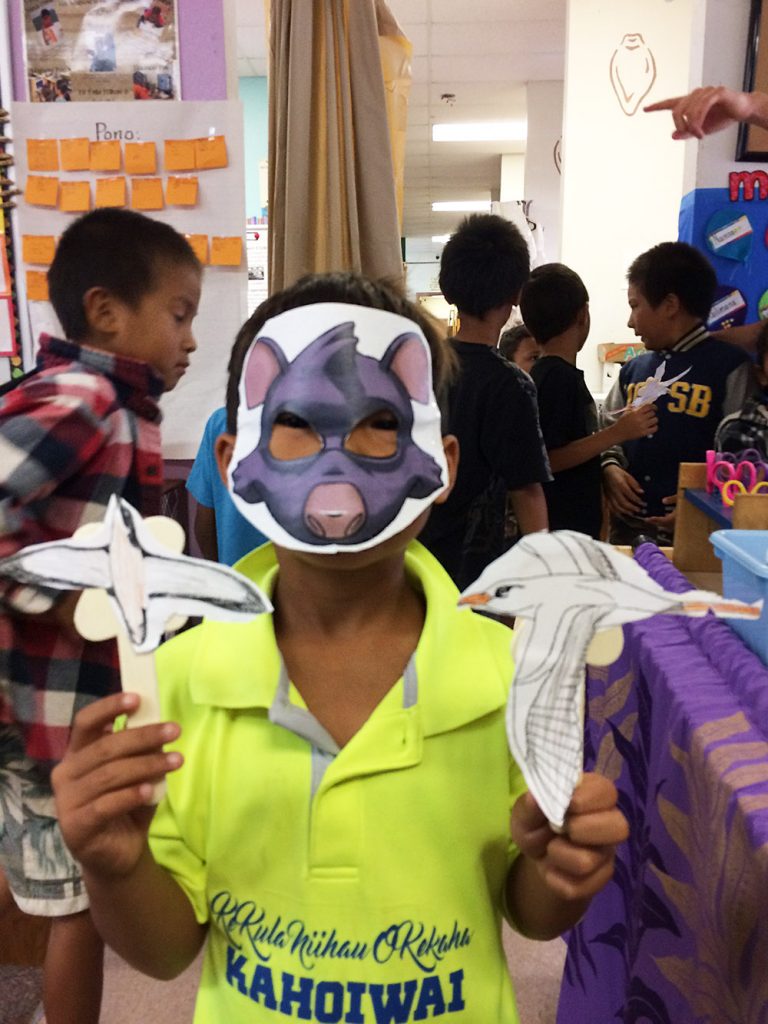
This is the situation on Lehua, I explain. The rats are eating the birds. Look at how many birds are getting eaten! The Moli, the ‘Ua’u kani, the Noio and many more. But, I work on Lehua and we are going to get all the rats off of Lehua so that it will continue to be the largest and most productive seabird breeding ground in the main Hawaiian Islands. As a local, that makes me proud. As a scientist, that makes me eager to see my work published and cited by others. As a teacher for a day, it makes me feel I’ve done a good job spreading the message of the value of island restoration and furthering the mission of this amazing organization, Island Conservation.
How does this help save a small island in the pacific? When these kids understand the unique ecosystems around them, just across the water and in their backyards, they will grow up understanding the conservation value of protecting the special places like Lehua that are separate from the daily impacts of human life. Through our work at Island Conservation, we show these kids and many others that when you care for the world around you as a steward of the land, you can make this world a better place, one island where a huge diversity of native species can flourish free of invasive species at a time.
As the old Hawaiian saying goes: He ali‘i nō ka ‘āina, ke kauwā wale ke kanaka. The land is king and the people are its servants. Lehua, I am here to serve you.
Who learned more, the kids or me? Who had more fun, the kids or me…? The pictures don’t lie.
Featured photo: Mele Khalsa giving a presentation to the Hawaiian language Niihau charter school Ke Kula Niihau O Kekaha. Credit: Andrew Foy
Check out other journal entries we think you might be interested in.

October 29, 2025
Astounding evidence of recovery on Ulong Island in Palau after just one year!
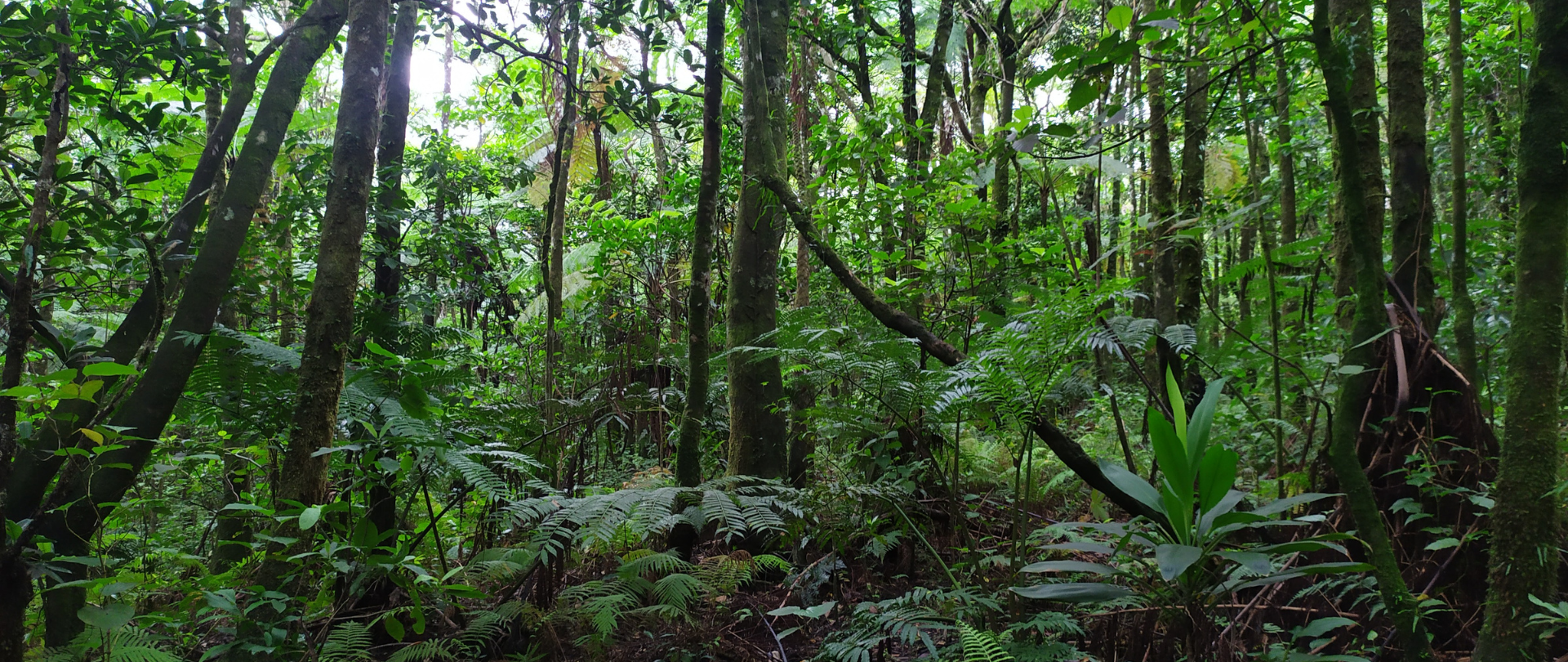
July 31, 2025
Our Seasonal Monitoring Specialist, Cozette Romero, shares her experience on Tofua in Tonga!
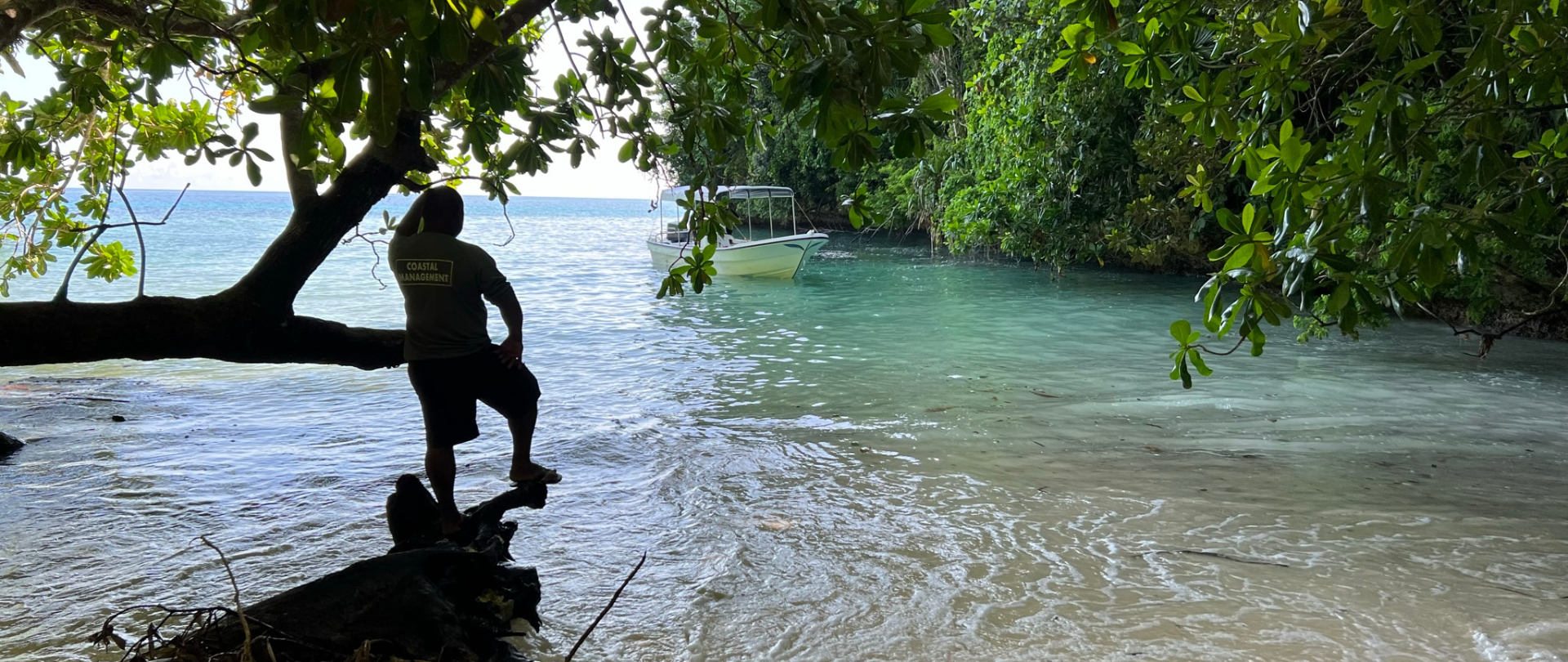
May 19, 2025
Read our position paper on The 3rd United Nations Ocean Conference (UNOC 3) to see why we're attending and what we aim to accomplish!
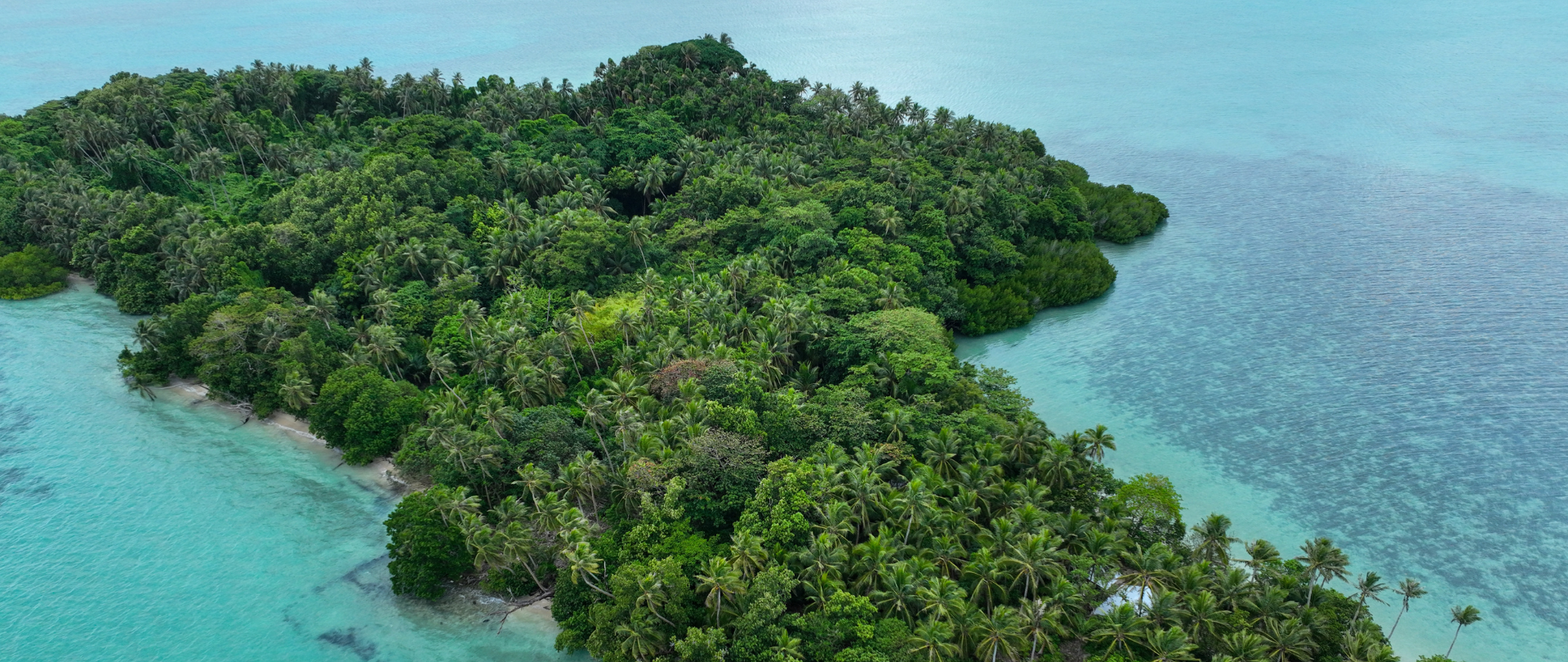
December 4, 2024
Ann Singeo, founder of our partner organization the Ebiil Society, shares her vision for a thriving Palau and a flourishing world of indigenous science!
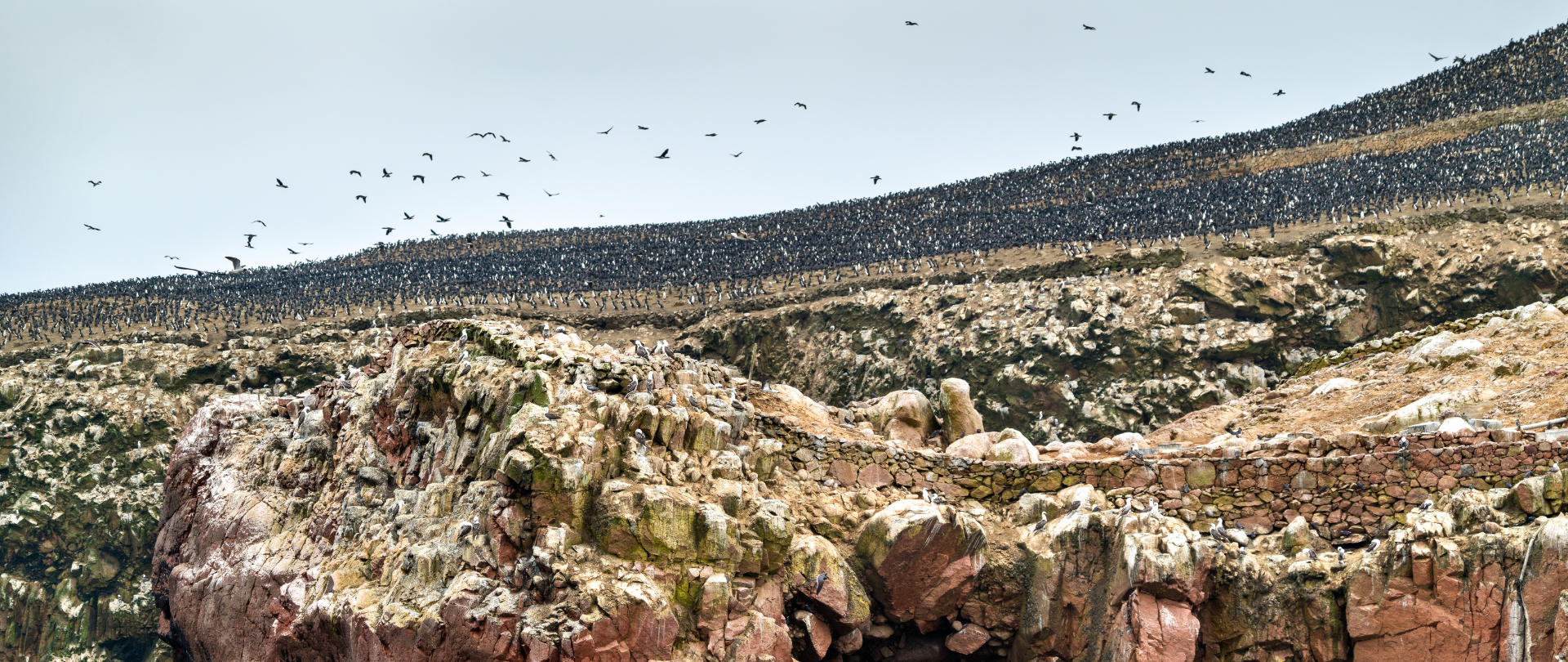
November 22, 2024
This historic agreement aims to protect the marine and coastal areas of the Southeast Pacific.
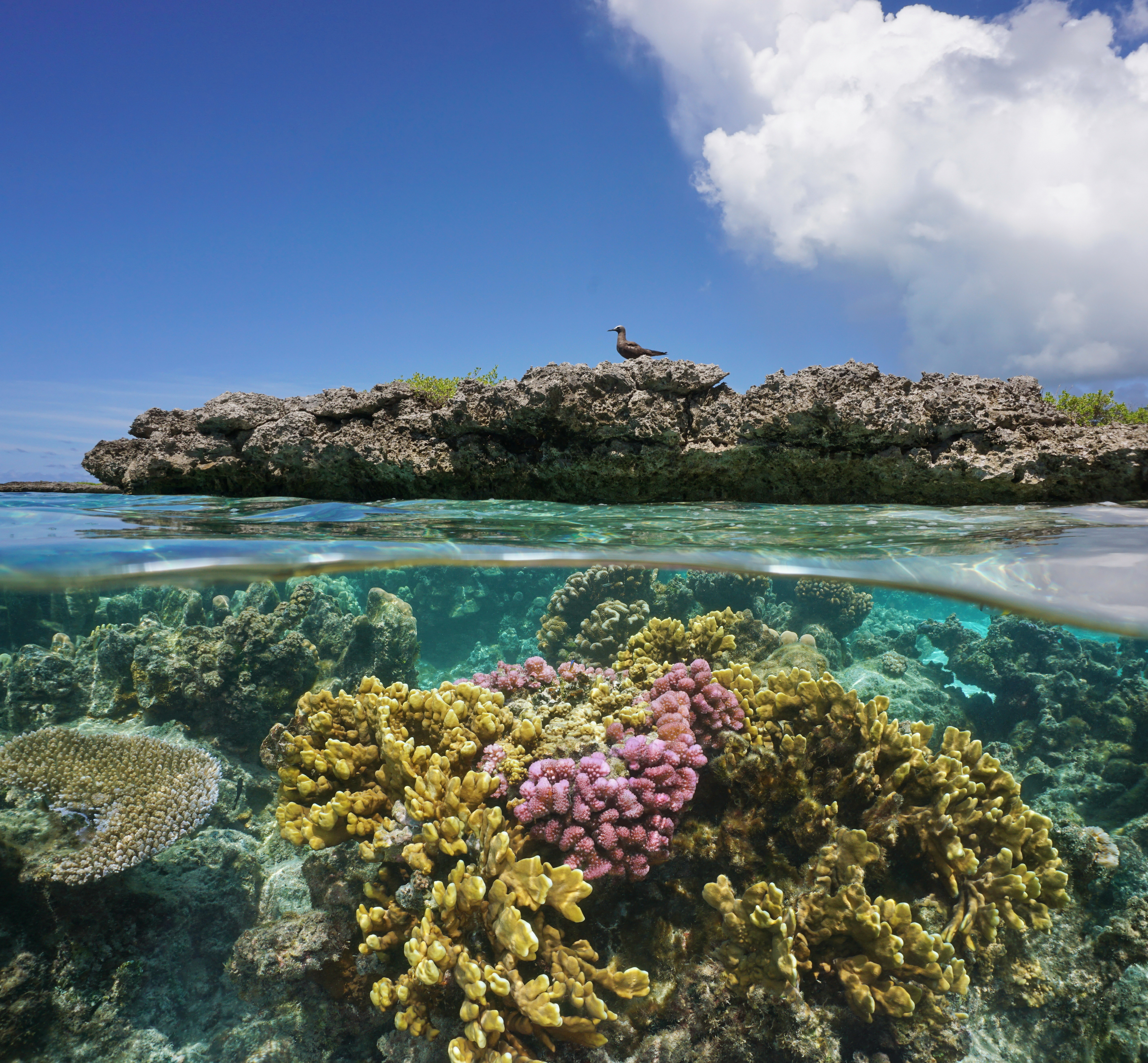
November 18, 2024
Our projects to restore key islets in Nukufetau Atoll forecast climate resilience and community benefits in Tuvalu!
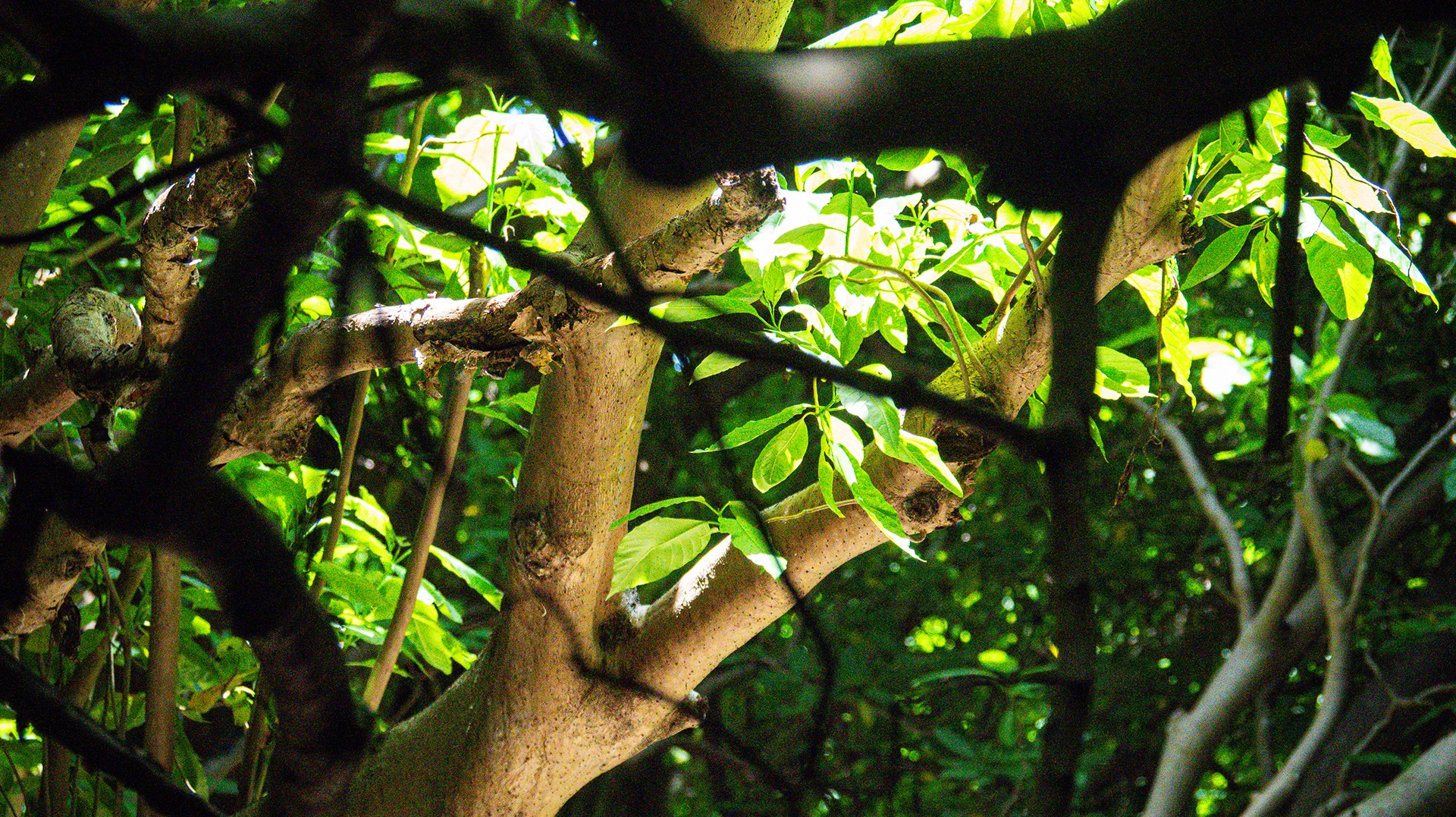
October 3, 2024
Island Conservation and partners have published a new paper quantifying ecosystem resilience on restored islands!
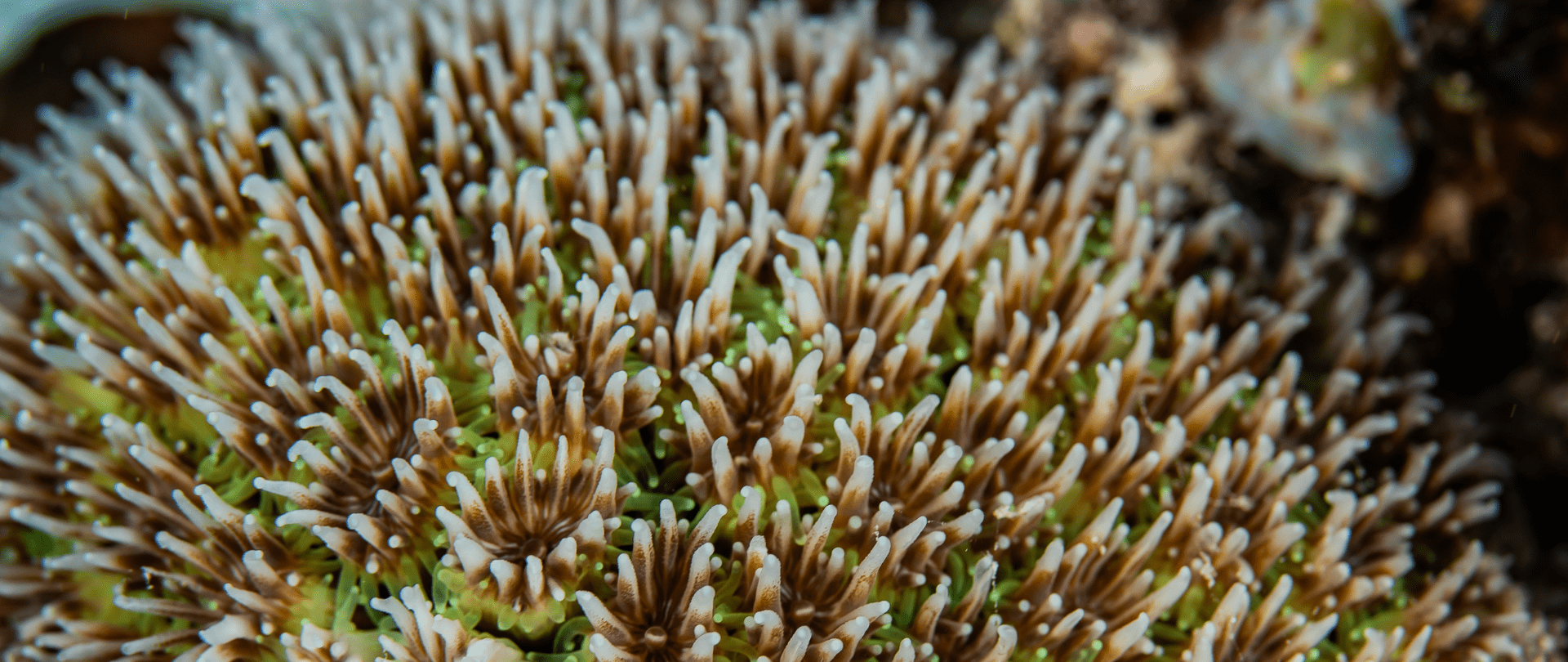
September 10, 2024
Climate Week NYC: what is it and why is it important? Read on to find out why Island Conservation is attending this amazing event!

September 5, 2024
With sea levels on the rise, how are the coastlines of islands transforming? Read on to find out how dynamic islands really are!

August 27, 2024
Three Island-Ocean Connection Challenge projects in the Republic of the Marshall Islands bring hope for low-lying coral atolls!